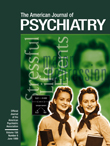“Monk” Requesting Castration
To the Editor: While the discussion of the man involved in a cult was extremely informative and well organized, I was surprised by the authors’ comment that “careful observation of cult activities and extensive clinical work with cult survivors have dispelled the early belief that cults exclusively attract only psychologically damaged or psychiatrically disordered individuals.” I am not taking issue with the authors’ well-researched references or personal beliefs, but I do think that this statement demonstrates a widespread phenomenon in clinical psychiatry currently: the reluctance to consider character or axis II pathology as having explanatory or etiological significance in the behaviors and symptoms of our patients. I assume that “psychologically damaged or psychiatrically disordered” refers only to axis I disorders such as psychosis, mania, or severe depression that interferes with normal functioning.
Brother David’s childhood history was elicited (“‘laid back’ but puncutated by occasional chaotic emotional responses from his homemaker mother”) but was assumed to have no significance, since he denied that there was any problem then. We who do psychotherapy and analysis know that it is an unusual patient who comes in complaining that his or her childhood experiences have caused all sorts of difficulties in his or her life. I would guess that a closer look at Brother David’s enduring coping/defense mechanisms and behavior would make clear major limitations in dealing with life’s vicissitudes on the basis of ego deficits, childhood trauma, neurotic conflicts, or whatever theoretical mechanism one finds most acceptable. In any event, it need not be that he is overtly psychotic, manic, or such to request castration. All he need do is use his characteristic defense mechanisms (e.g., denial, reaction formation, and intellectualization) to determine that the cult offers him stability and structure that he can get in no other way obvious to him.
Psychopharmacologists and neuroscientists may have little need for depth psychology, but general psychiatrists and those seeing patients as consultants for other medical specialties should be able to identify the defensive styles and mechanisms of the patients they evaluate. Even more important, clinical psychiatrists should be aware of the enormous difficulties in functioning that can result from neurotic psychopathology in the absence of axis I diagnoses. I include references for further reading (1–4).
1. Vaillant GE: Theoretical hierarchy of adaptive ego mechanisms. Arch Gen Psychiatry 1971; 24:107–118Crossref, Medline, Google Scholar
2. Freud A: The Ego and Mechanisms of Defense. New York, International Universities Press, 1966Google Scholar
3. Bernstein DP, Cohen P, Skodol A, Bezirganian S, Brook JS: Childhood antecedents of adolescent personality disorders. Am J Psychiatry 1996; 153:907–913Link, Google Scholar
4. Westen D: Divergences between clinical and research methods for assessing personality disorders: implications for research and the evolution of axis II. Am J Psychiatry 1997; 154:895–903Link, Google Scholar



